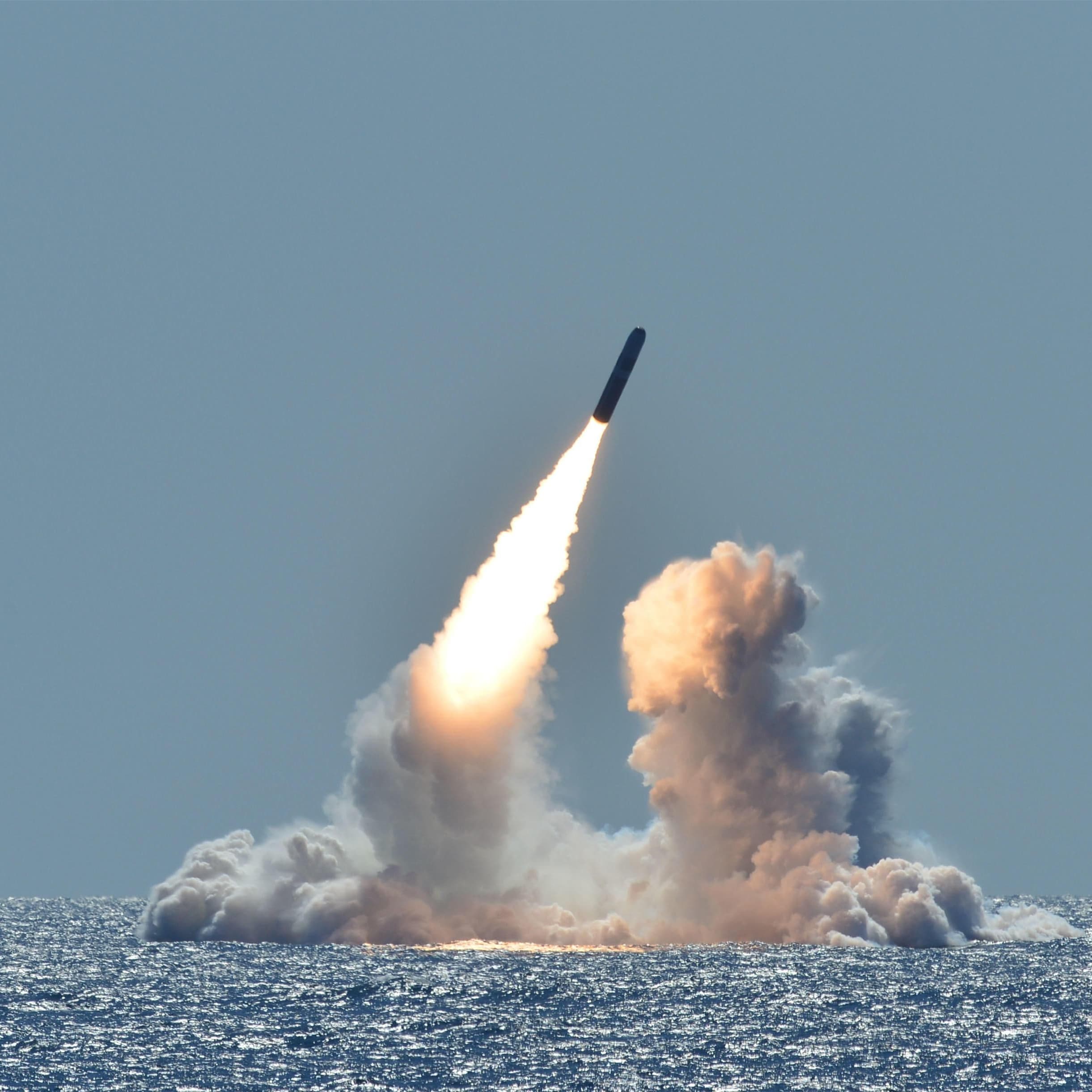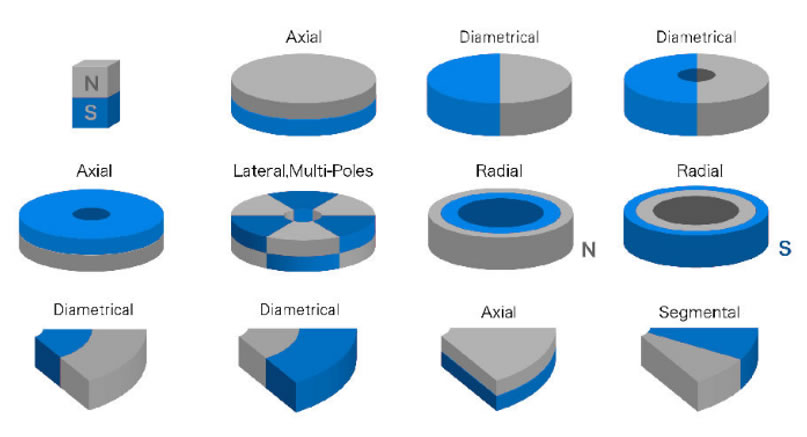In many applications in life, the orientation of the magnet’s poles may not matter – as long as the magnet attracts where it is needed. In other cases, however, the directionality of the magnet is an important component of the intended application.
Understanding the conventional and specialized magnetization directionality options available helps to ensure successful applications.
Polarity-Based Magnet Type
Generally, the magnetization direction starts with two general types of magnets: isotropic and anisotropic.
Most magnets are anisotropic, which means they have a preferred direction of magnetization. During magnetization, a magnetic field is applied in the direction of magnetization to orient the material and increase the performance potential of the magnet. For this reason, anisotropic magnets can also be referred to as directional materials. Examples of anisotropic magnets include cast AlNiCo 5, 6, 8.
On the other hand, isotropic magnets have the same magnetic properties in all directions. Therefore, these magnets can be magnetized in any direction. Isotropic magnets, also known as non-directional magnets, are pressed or cast without a specific polarity and magnetized later in the manufacturing process. While this process worked for a wider range of magnetization options, the resulting magnet never reached its full potential. An example of an isotropic magnet is Alnico 2, 3 and bonded neodymium.
Once magnetized, the directionality of the magnet cannot be changed.
Conventional Magnetization Directionality
Most often, AlNiCo, Neodymium, Samarium Cobalt, Ferrite magnets are magnetized in conventional patterns. You can refer to the following conventional shapes:
- Axially Magnetized

Axially magnetized means the material is magnetized through the length of the magnet. In disc and block magnets, for example, this provides the largest surface area for holding.
- Diametrically Magnetized
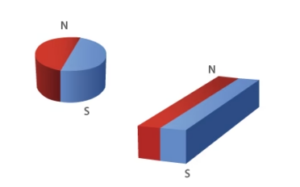
Diametrically magnetized material is magnetized through the width of the magnet. For instance, rod magnets that have been magnetized through the width (or diameter) are frequently used for sensors.
- Spheres
Although a specialized product mainly for sensors, spheres are magnetized in a conventional manner. Spheres are axially magnetized, however simply rotating the magnet places the pole in the needed location.
Specialized Orientations:
Sometimes, engineers, designers and fabricators require magnets with shapes and polarity beyond conventionally magnetized material. In these cases, some specialized magnetization directionality includes:
- Multiple Poles
We provide ceramic blocks and discs with both the north and south pole on both faces of the magnet. With oriented material (anisotropic), multiple pole magnetization flux goes through the magnet making both sides of the magnet strong. Alternatively, with isotropic magnets, the multiple-pole magnetization flux bends inside the magnet making it strong on one side only. Flexible magnetic sheeting is magnetized to have multiple poles on the surface for shear strength. Additionally, bar magnets may have multiple poles on the surface to increase holding strength.
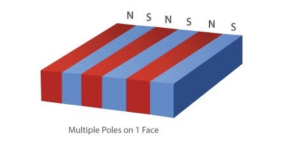
- Radial
Radial-oriented magnetization is used for a variety of applications from motors to actuators to sensors. A true radial pattern is magnetized along the inside diameter and outside diameter of the magnet.
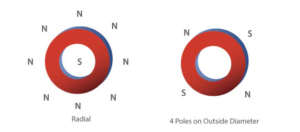
Another pattern includes multiple poles around the outside diameter of the ring. This is commonly used for Hall Effect sensors, servo-motors, couplings and generators.
- Arcs
Highly specialized, radial arcs are widely used throughout the industry. As a true radial arc is very difficult and expensive to create (the poles radiate out in a true arc shape from the center of the arc), an approximated radial arc is most often used instead. In this instance, the magnetization aligns along a straight axis across the arc.
Likewise, substitute an approximated circumferential arc when a circumferential arc is desired. This employs parallel magnetization along the width of the arc.
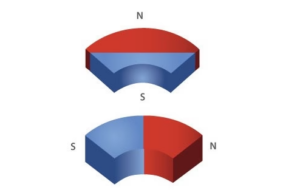
In both cases, the approximated arcs lose minimal strength along the outer edges, however, typically save substantially in fabrication costs.
Understanding a magnet’s directionality is key to selecting the right magnet for the application.
For any magnetization questions, please contact sales06@hsmagnet.com. Our experienced professional team can help you choose the correct magnetic orientation for your application.
